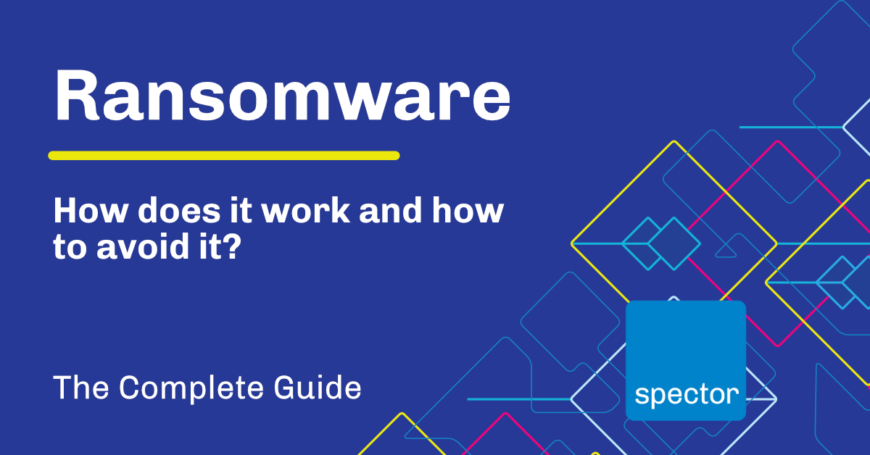
Why you need a fresh ransomware guide in 2025
In 2025, ransomware continues to be one of the most disruptive—and expensive—cyber threats targeting businesses. It’s no longer limited to large global enterprises. Irish SMEs, professional service firms, and healthcare providers are now frequent targets due to weaker defences and higher chances of payout. Ransomware remains the #1 cause of unplanned downtime for small and mid‑size businesses, with the average pay‑out jumping 60 % last year (Sophos State of Ransomware 2024). This ransomware guide will walk you through what ransomware is, how it works, how to spot risks early, and—most importantly—how to prevent and recover from an attack.
Why this ransomware guide matters for your business
1. What is Ransomware and How Does It Work?
Ransomware is a type of malware (malicious software) designed to lock or encrypt your files so that you can no longer access them. Criminals then demand a ransom—often in cryptocurrency—in exchange for returning your data or unlocking your systems.
Here’s how it usually unfolds:
-
Infection – Usually via a phishing email, malicious attachment or a link clicked by an employee.
-
Spread – Once on one device, the ransomware searches for shared drives and connected systems to spread.
-
Encryption – Files and critical systems are locked. You may receive a message demanding a payment.
-
Ransom – Payment is usually requested via untraceable methods like Bitcoin.
In some cases, attackers now steal the data before encrypting it, threatening to leak it publicly if you don’t pay—this is known as double extortion.
Take a look at CISA’s StopRansomware portal
2. What Are the Real-World Impacts of a Ransomware Attack?
A successful ransomware attack causes more than just IT downtime. It can include:
-
Complete business interruption
-
Legal and GDPR obligations (especially if personal data is exposed)
-
Loss of customer trust
-
Significant financial cost (investigations, recovery, compensation)
According to the NCSC, ransomware attacks have grown in sophistication.
3. A Real Example – The NHS and WannaCry Attack
In 2017, the UK’s National Health Service was hit by WannaCry, a ransomware variant that spread across 150 countries in a single day. Over 19,000 appointments were cancelled, costing the NHS an estimated £92 million. The entry point? Outdated software and unpatched systems.
This same threat still exists today. If your company is running outdated versions of Windows or unpatched applications, you’re at risk—even if you don’t store sensitive data.
4. Why Is Ransomware Still So Successful
Despite increasing awareness, ransomware continues to spread because:
-
Employees still click on phishing emails
-
Legacy systems and software aren’t always patched
-
Many SMEs don’t invest in cyber training
-
Backups are often insufficient or not properly tested
-
Organisations lack a clear incident response plan
5. How Can You Prevent Ransomware?
Here are the most practical, non-technical measures every business should take:
5.1. Train your staff regularly
Phishing is still the #1 delivery method. Train staff to spot suspicious emails and run quarterly simulations to test their awareness.
Read our blog on Why is Phishing Getting More Frequent?
5.2. Use multi-factor authentication (MFA)
Make it harder for attackers to gain control of your email or IT systems by enabling MFA across all business accounts.
5.3. Keep systems updated
Set up automatic updates for Windows, software and all business apps. Unpatched vulnerabilities are a common entry point.
5.4. Back up everything—and test it
Follow the 3-2-1 rule:
-
Keep 3 copies of your data
-
Store on 2 different types of media
-
Keep 1 off-site (cloud backup or offline drive)
Test your backups monthly to ensure they can be restored quickly in a crisis.
5.5. Use reputable security tools
Endpoint protection (like Sophos or Bitdefender), email scanning, and DNS filtering can block malware before it spreads.
5.6. Segment your network
Separate critical servers and sensitive data from general users. This slows down an attack and limits damage.
5.7. Build an incident response plan
Know what you’ll do if ransomware hits. Identify key contacts, include your insurer, and create checklists for each step—from isolation to recovery.
6. Should you ever pay the ransom?
Most law enforcement agencies, including Europol and the Garda National Cyber Crime Bureau, advise against paying. There’s no guarantee you’ll get your data back, and you may be targeted again.
However, in the real world, some businesses feel forced to pay to survive. This is where Cyber Liability Insurance comes in.
7. The Role of Cyber Liability Insurance in Ransomware Recovery
A well-structured policy can cover:
-
Ransom payments
-
Incident response costs (IT, legal, PR)
-
Recovery and downtime
-
Regulatory fines
But beware: insurers increasingly require proof that your defences (MFA, backups, endpoint protection) were in place. Without them, your claim could be denied.
Learn how to build a policy that pays out on our Cyber Liability Insurance Guide
8. Emerging trends shaping the next ransomware guide
-
Ransomware‑as‑a‑Service cartels now sell one‑click ESXi encryptors.
-
Data‑destruction wipers masquerade as ransomware to sow chaos.
-
AI voice cloning in vishing scams targets finance teams.
-
ICS attacks: OT networks in pharma and utilities increasingly hit.
Read: CrowdStrike Global Threat Report 2025
9. What Should You Do If You’re Hit?
If ransomware hits your business, don’t panic. Act quickly:
-
Isolate the infected systems – disconnect them from the network
-
Notify your IT support or provider
-
Contact your insurer
-
Avoid rebooting or wiping devices
-
Report it – Notify the Data Protection Commission if personal data is involved
10. Where to Go From Here – Build a Layered Defence
Ransomware is a business threat—not just an IT issue. The best approach is layered:
-
Train your people
-
Protect your systems
-
Back up your data
-
Prepare your response
At Spector IT, we help growing Irish companies assess their cyber risk, patch their weak points and prepare for worst-case scenarios.
Ready to Strengthen Your Ransomware Defences?
Our Cyber Security GAP Analysis is a structured review of your current risks, controls and incident-readiness. It’s ideal for SMEs that want to reduce ransomware risk, pass insurance requirements, or meet ISO 27001 or GDPR compliance. Book a free 30‑minute call and get a customised action plan.
Post updated on – 07/05/2025

